Effective Tactics for Seamless Customer Care Success
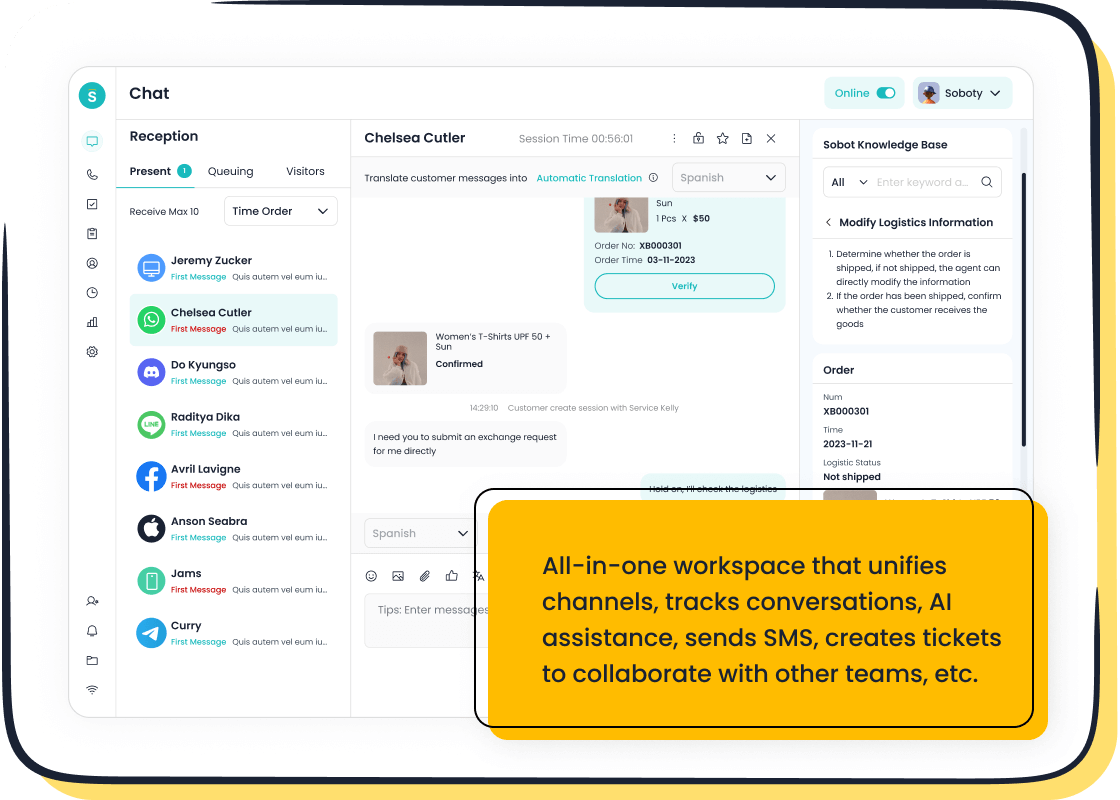
In 2025, seamless customer care will define business success. Customers now expect more than just answers—they demand personalized attention and fast service. Statistics show that 96% of customers value service quality when deciding brand loyalty. Moreover, 93% of service teams report rising customer expectations. Meeting these demands requires innovative tools like Sobot, which simplifies interactions and enhances the customer experience. Businesses must also embrace AI and omnichannel solutions to stay competitive. By focusing on these strategies, you can ensure satisfaction and loyalty in an ever-changing landscape.
Understanding Customer Expectations in 2025
The Need for Personalization in Customer Interactions
Personalization has become a cornerstone of modern customer service. Customers now expect businesses to understand their preferences and tailor interactions accordingly. For example, 71% of buyers anticipate personalized experiences, while 87% of professionals agree that customers demand this level of service. Companies that embrace advanced personalization strategies report a 23% boost in customer satisfaction and a 20-point rise in Net Promoter Scores (NPS). Additionally, businesses offering highly personalized services achieve a remarkable 98% customer retention rate.
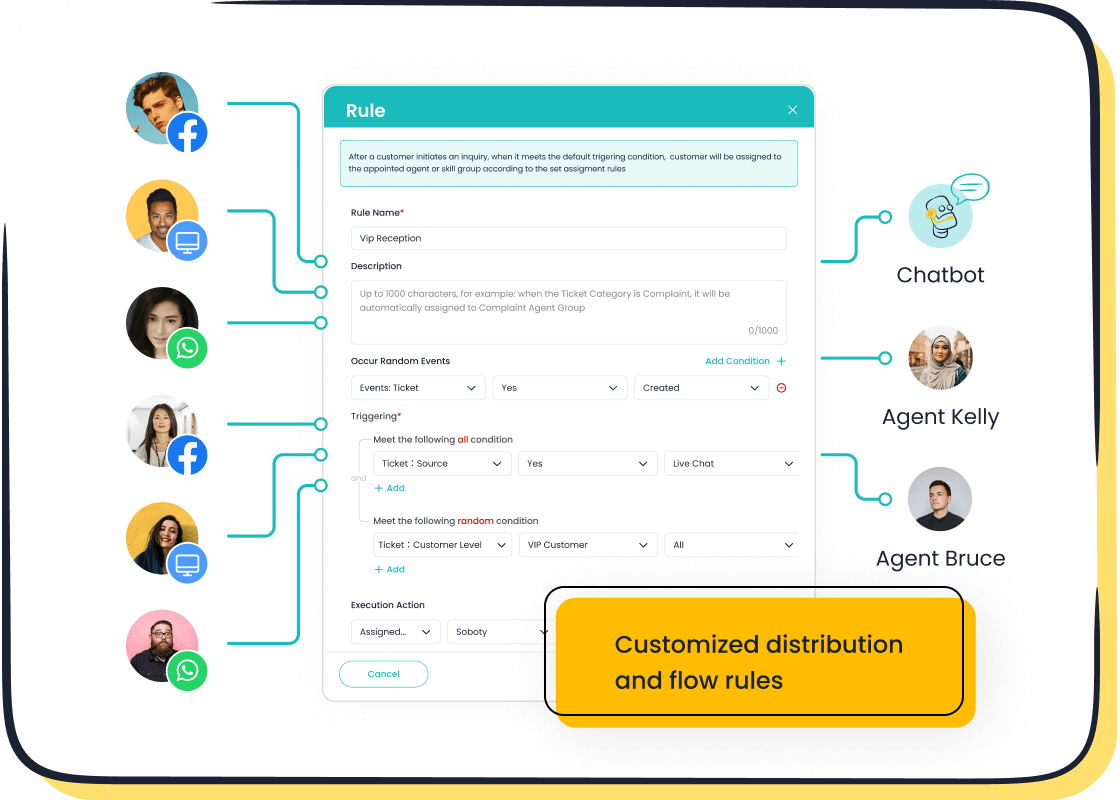
In 2025, personalization will no longer be optional. It will define how customers perceive your brand and influence their loyalty. By leveraging tools like Sobot Live Chat, you can deliver tailored experiences that meet these expectations. This platform uses AI to segment customers and provide precise, context-aware responses, ensuring every interaction feels unique and meaningful.
Delivering a Seamless Omnichannel Experience
A seamless omnichannel experience is essential for meeting customer expectations in 2025. Customers interact with brands across multiple platforms, from social media to email. They expect consistent service regardless of the channel they choose. Businesses with effective omnichannel strategies retain up to 91% of their customers, compared to just 33% for those without. Moreover, companies using omnichannel engagement see an annual revenue increase of 9.5%, far surpassing the 3.4% growth of non-omnichannel businesses.
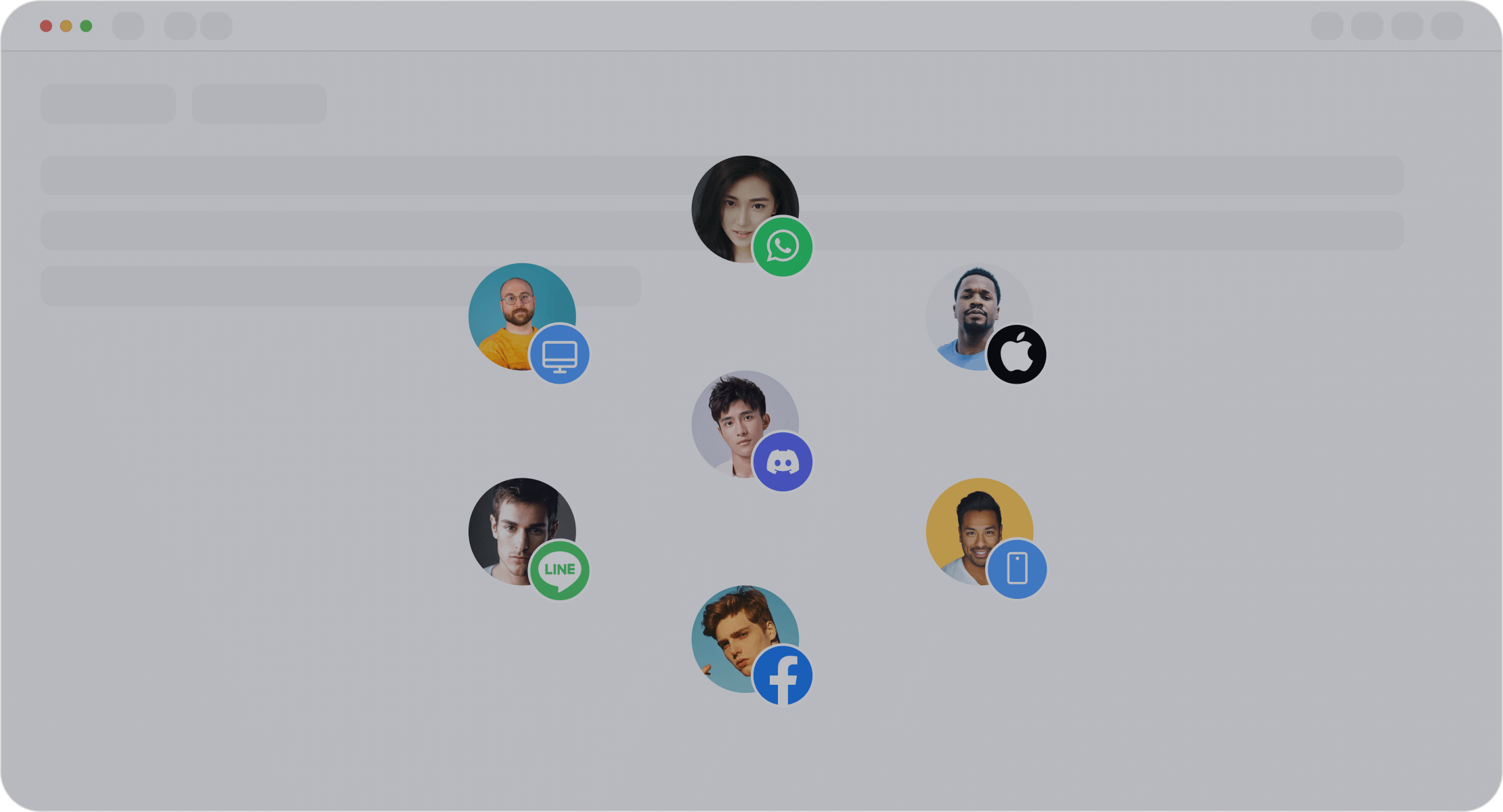
Sobot’s Omnichannel Solution simplifies this process by unifying all communication channels into a single platform. This ensures that your team can provide consistent, high-quality service across every touchpoint. By adopting such solutions, you can enhance customer satisfaction and build long-term loyalty.
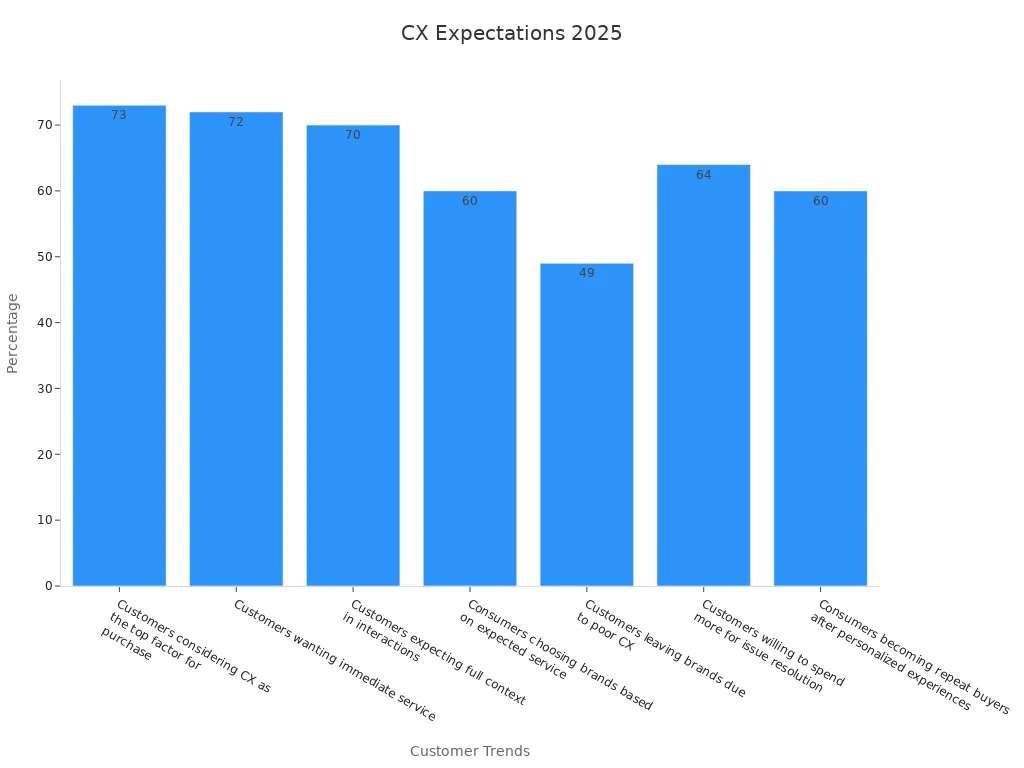
Proactive Service as a Competitive Advantage
Proactive customer service sets your business apart in a competitive market. Instead of waiting for customers to report issues, proactive service anticipates their needs and resolves problems before they arise. This approach not only improves the customer experience but also boosts key performance metrics. For instance:
| Metric | Description |
|---|---|
| Customer Lifetime Value (CLV) | Indicates the total value a customer brings over their relationship with your business, reflecting loyalty and retention. |
| Frequency of Upsells/Cross-sells | Measures how often additional products or services are sold, showcasing customer engagement and satisfaction. |
By using predictive analytics, you can identify potential issues and address them proactively. Sobot’s AI-driven tools empower your team to deliver this level of service, ensuring your customers feel valued and supported at every stage of their journey.
Meeting Expectations for Speed and Efficiency
Speed and efficiency are critical for meeting customer expectations in 2025. Customers want quick resolutions and seamless service experiences. Delays or inefficiencies can lead to frustration and lost loyalty. Studies show that 42% of customers feel disappointed after poor service, while 43% report unhappiness and 41% express anger. Worse, 67% share their negative experiences with others, and 65% switch to competitors. On the other hand, 83% of customers feel more loyal to brands that resolve complaints promptly.
Efficient service not only satisfies customers but also reduces operational costs. Nearly 80% of support costs arise from understanding the problem and finding solutions. Implementing advanced tools like Sobot Live Chat can decrease handling time by 20%-30%. First call fix rates can improve by over 40%, and escalations can drop to zero in some cases. Trouble tickets resolved within 24 hours increase significantly, while overall cycle times shrink from days to hours. Self-service options can also reduce call volumes by 15%-25%.
To achieve speed and efficiency, focus on tools that streamline workflows and empower your team. Sobot Live Chat offers features like intelligent assignment and AI-assisted tools, ensuring faster resolutions. Its unified workspace eliminates the need to switch between systems, saving time and boosting productivity. By adopting such solutions, you can meet customer expectations in 2025 and build lasting loyalty.
Key Strategies for Seamless Customer Care
Personalizing Every Customer Journey
Personalization transforms how customers perceive your brand. It builds trust and fosters loyalty by making every interaction feel tailored to their needs. According to McKinsey, 80% of customers are more likely to make a purchase when offered personalized experiences. This approach not only drives immediate sales but also strengthens long-term retention. For instance, personalized recommendations lead to impulse purchases for 49% of customers, with 85% expressing satisfaction afterward.
To achieve this, focus on creating a personalized onboarding experience. Tools like Sobot Live Chat enable you to segment customers based on their preferences and behaviors. AI-powered features ensure precise profiling, allowing you to deliver personalized customer service that resonates with each individual. By integrating personalization into your customer journey, you can reduce acquisition costs by up to 50% and boost marketing ROI by 10% to 30%.
Building a Seamless Omnichannel Support System with Sobot
A seamless omnichannel support system ensures customers receive consistent service across all platforms. Whether they engage across multiple channels like social media, email, or live chat, they expect a unified experience. Businesses that adopt omnichannel strategies see a 9.5% annual revenue increase, compared to 3.4% for those without.
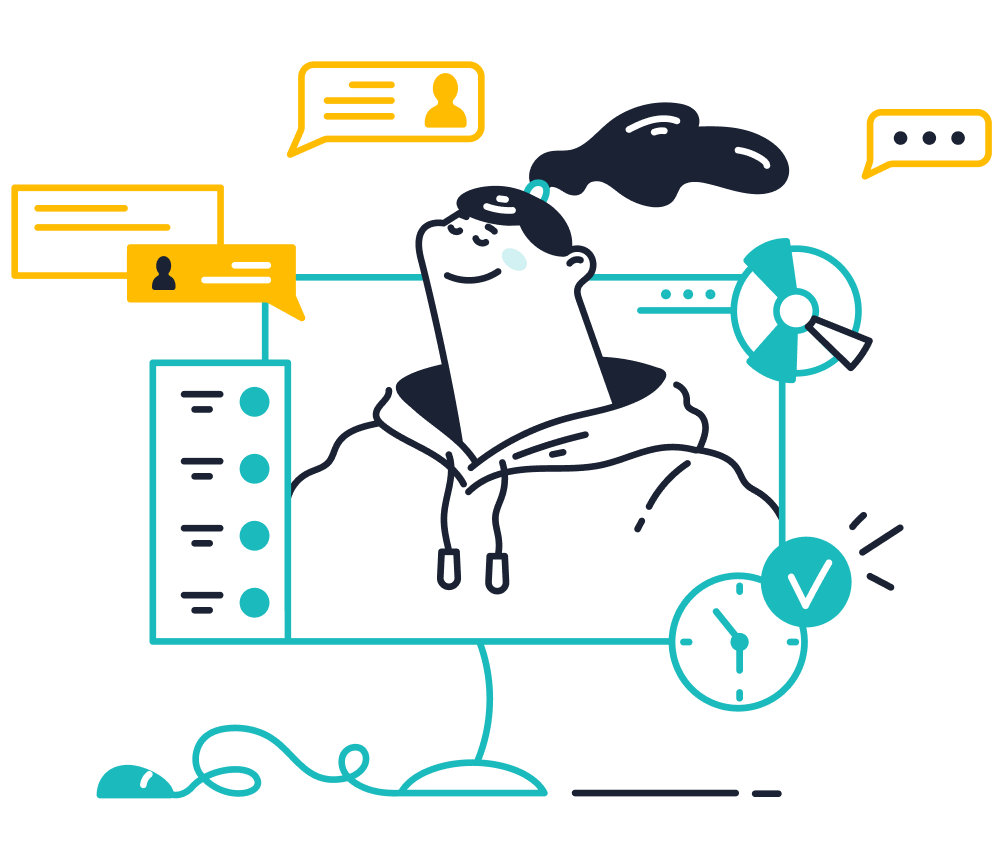
Sobot’s Omnichannel Solution simplifies this process. It integrates communication channels into a single platform, reducing response times by 80% and increasing agent efficiency by 20%. Samsung’s success story highlights the impact of this strategy. By implementing Sobot’s solution, Samsung achieved a 30% boost in agent efficiency and a 97% customer satisfaction rate. These results demonstrate how effective communication and streamlined workflows can elevate your customer service experience.
Proactive Communication and Issue Resolution
Proactive communication anticipates customer needs and resolves issues before they arise. This strategy enhances customer satisfaction and builds loyalty. For example, predictive analytics can identify potential problems, allowing you to address them early. In the ecommerce sector, businesses using proactive customer engagement strategies have improved retention rates and satisfaction levels significantly.
Sobot’s AI-driven tools empower your team to deliver proactive service. Features like automated onboarding processes and intelligent assignment ensure faster resolutions. By adopting this approach, you can improve metrics like Customer Lifetime Value (CLV) and upsell frequency. Proactive communication not only strengthens relationships but also positions your brand as a leader in exceptional customer experience management.
Balancing Speed and Quality in Customer Service
Balancing speed and quality in customer service is essential for delivering an exceptional customer experience. While customers expect quick responses, they also value thorough and accurate solutions. Achieving this balance requires a strategic approach that prioritizes both efficiency and attention to detail.
Fast response times can significantly enhance the customer service experience. For example:
- Reducing the first response time from 6 hours to 2 hours often leads to more positive feedback.
- Shortening the average resolution time from 14 days to less than 2 days can dramatically increase customer retention.
- Training initiatives that focus on quality have been shown to boost customer satisfaction scores by 15%.
These improvements highlight the importance of combining speed with quality to meet customer expectations effectively.

To maintain this balance, you need strategies that streamline workflows without compromising service quality. Tools like Sobot Live Chat can help you achieve this. Its intelligent assignment feature ensures that inquiries are routed to the most qualified agents, reducing delays. AI-assisted tools provide agents with real-time suggestions, enabling them to resolve issues faster while maintaining accuracy. These features not only improve efficiency but also enhance the overall customer service experience.
Another effective strategy involves empowering your team through training. Equip your agents with the skills they need to handle complex issues confidently. Focus on developing their problem-solving abilities and communication skills. When agents feel prepared, they can deliver high-quality service even under time constraints. This approach not only improves customer satisfaction but also fosters long-term retention.
Additionally, consider implementing self-service options to address common inquiries. Customers appreciate the ability to find answers quickly without waiting for assistance. Self-service tools, such as knowledge bases and AI-powered chatbots, can reduce call volumes by up to 25%. This allows your team to focus on more complex issues, ensuring a seamless customer care experience.
Ultimately, balancing speed and quality requires a customer-centric strategy. By leveraging advanced tools, investing in agent training, and offering self-service options, you can meet customer expectations while maintaining high standards of service. This approach not only enhances the customer experience but also helps increase customer retention and loyalty.
Leveraging Technology and Tools for Customer Care
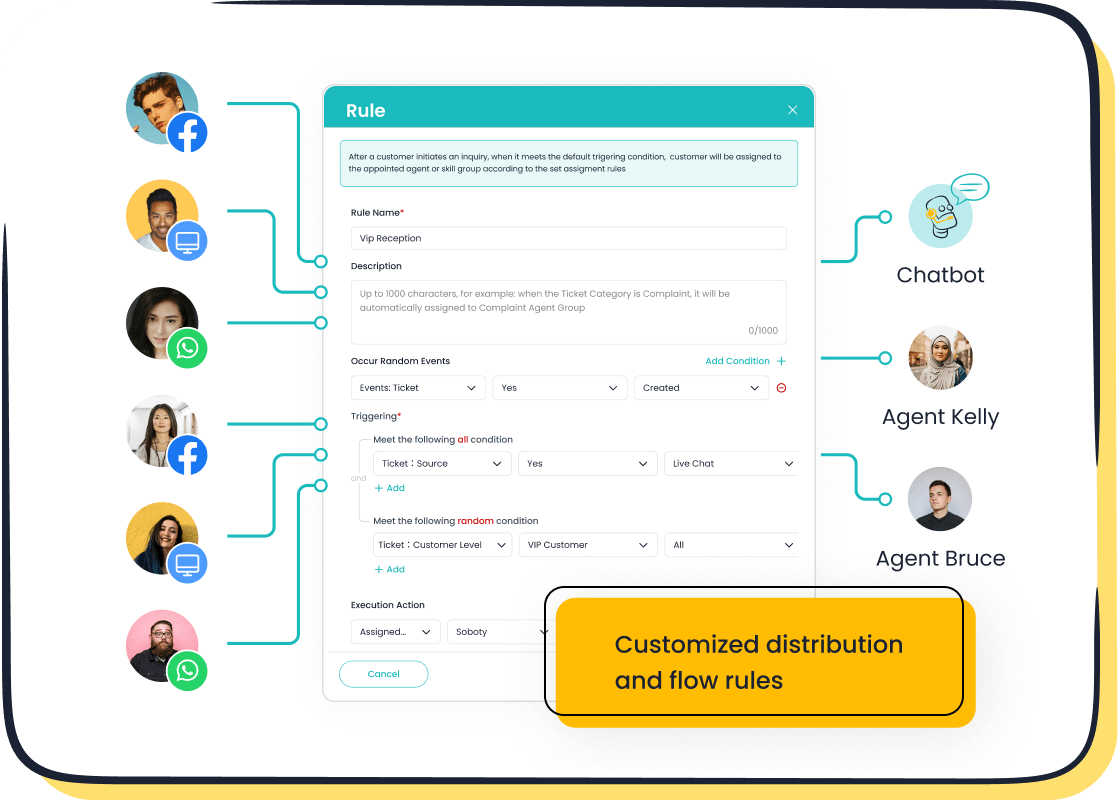
Enhancing Customer Service with AI and Automation
AI and automation have transformed customer service, making it faster and more efficient. These technologies allow you to handle repetitive tasks, freeing your team to focus on complex issues. For example, AI-powered chatbots can provide real-time support, answering common questions instantly. Studies show that chatbots will drive $142 billion in retail sales by 2024, proving their financial impact. Businesses using AI have reduced average response times from 15 minutes to 2 minutes, improving customer satisfaction scores significantly.
Automation also enhances first-contact resolution rates. A leading e-commerce company increased this metric by 25% after implementing AI tools. Companies like Motel Rocks deflected 43% of tickets with AI agents, reducing ticket volume by 50%. This approach not only improves efficiency but also boosts customer engagement. Sobot’s AI-driven solutions empower your team to deliver proactive service, ensuring every customer interaction feels seamless and personalized.
Using Sobot Live Chat for Real-Time Customer Engagement
Real-time support is essential for meeting customer expectations. Sobot Live Chat enables you to engage with customers instantly across multiple channels, including websites, apps, and social media platforms like WhatsApp and Facebook. This tool ensures no missed opportunities by being present on the customer’s preferred channel. Businesses using Sobot Live Chat have reported a 38% increase in conversion rates, turning visitors into loyal clients.

The platform’s AI-assisted tools enhance agent efficiency, allowing faster resolutions without compromising quality. Features like intelligent assignment ensure inquiries are routed to the right agent, reducing delays. Built-in analytics provide insights into customer behavior, helping you optimize your service strategies. Samsung’s success story demonstrates the power of Sobot Live Chat. By integrating this solution, Samsung achieved a 30% boost in agent efficiency and a 97% customer satisfaction rate. These results highlight how real-time support can elevate the customer experience.
Integrating CRM Systems for Unified Customer Data
A unified view of customer data is crucial for delivering personalized service. CRM systems consolidate information from various touchpoints, giving your team a complete picture of each customer’s journey. This integration strengthens customer bonds and boosts satisfaction. Statistics reveal that 92% of businesses view CRM as essential for achieving revenue goals, while 73% use it to enhance relationships.
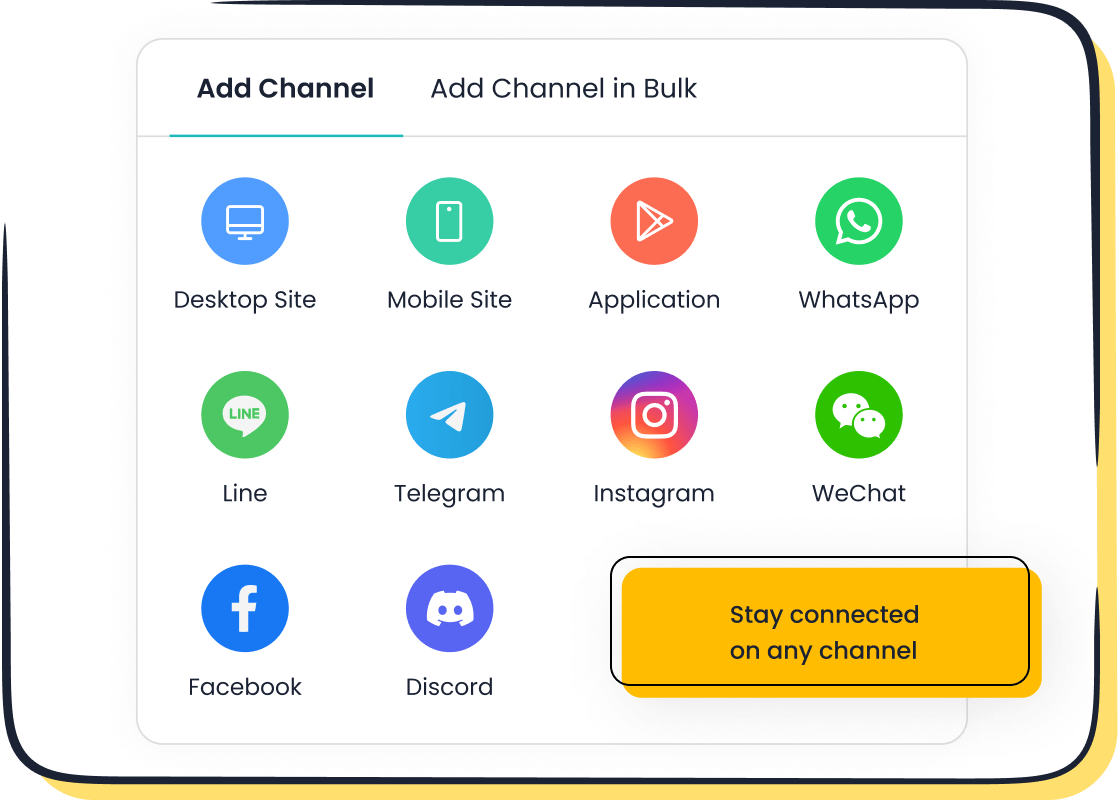
CRM systems also drive conversions. Companies leveraging these tools have seen a 300% increase in conversion rates. Sobot’s solutions integrate seamlessly with CRM platforms, ensuring your team has access to accurate and up-to-date customer data. This connectivity reduces repetitive questioning and improves service quality. Telstra reported a 20% reduction in follow-up calls after using AI to summarize customer data, showcasing the efficiency of unified systems.
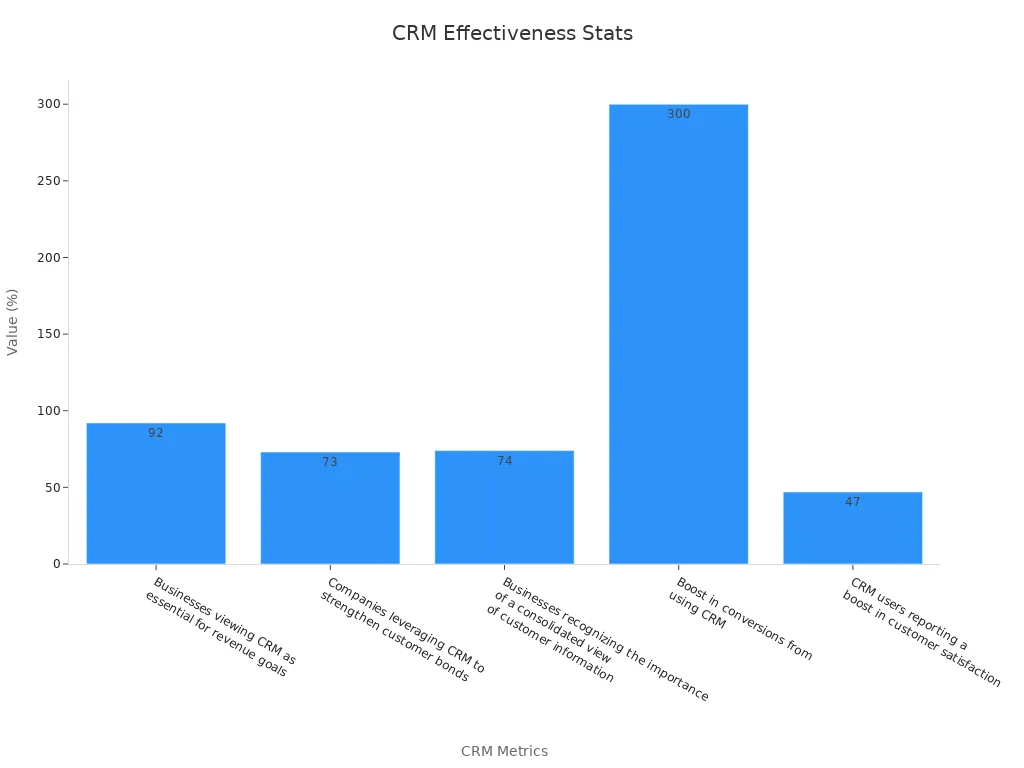
By adopting CRM systems, you can enhance customer satisfaction, streamline workflows, and achieve long-term success.
Harnessing Data Analytics for Continuous Improvement
Data analytics plays a pivotal role in refining customer care strategies. By analyzing key metrics, you can uncover patterns, identify inefficiencies, and make informed decisions to enhance service quality. This approach not only improves customer satisfaction but also boosts operational efficiency.
Why Data Analytics Matters in Customer Care
Every interaction with your customers generates valuable data. When you harness this information effectively, it becomes a powerful tool for continuous improvement. For instance, tracking metrics like customer satisfaction (CSAT) and first call resolution (FCR) helps you understand what works and what doesn’t. These insights allow you to fine-tune your processes, ensuring a better experience for your customers.
Tip: Start small by focusing on a few key metrics. Gradually expand your analytics efforts as you gain confidence in interpreting the data.
Key Analytics Indicators to Monitor
To achieve continuous improvement, you need to monitor specific indicators that reflect the health of your customer care operations. Here’s a breakdown of the most impactful metrics:
| Indicator | Description |
|---|---|
| Customer satisfaction (CSAT) | Measures customer feedback to understand satisfaction drivers and improve service quality. |
| First call resolution (FCR) | Identifies patterns in interactions to reduce repeat calls and resolve issues faster. |
| Average handle time (AHT) | Highlights inefficiencies in call handling, enabling quicker issue resolution and improved productivity. |
| Net promoter score (NPS) | Evaluates customer sentiment and loyalty, pinpointing factors influencing promoters and detractors. |
By focusing on these metrics, you can pinpoint areas for improvement and track your progress over time. For example, a high AHT might indicate inefficiencies in your workflows, while a low FCR could suggest the need for better training or tools.
How Sobot Empowers Data-Driven Decisions
Sobot’s advanced analytics tools simplify the process of gathering and interpreting data. The platform evaluates over 150 indicators, providing you with actionable insights to optimize your customer care strategies. Built-in analytics dashboards allow you to visualize trends, identify bottlenecks, and measure the impact of your initiatives.
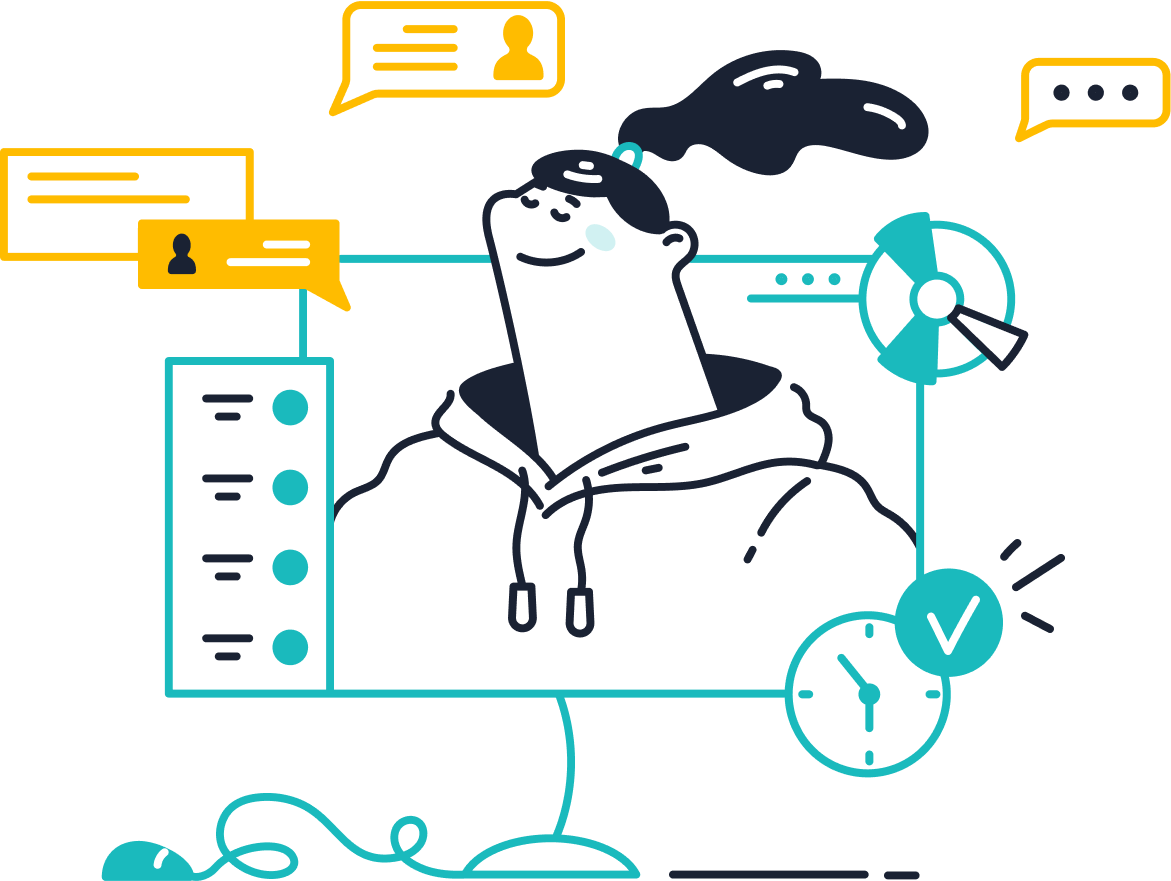
For instance, Sobot Live Chat offers customizable reports that highlight key performance metrics. These reports help you understand customer behavior, enabling you to tailor your services to meet their needs. By leveraging these insights, you can reduce average handle times, improve first call resolution rates, and boost overall satisfaction.
Turning Insights into Action
Data alone doesn’t drive improvement—it’s how you act on it that makes the difference. Use the insights from your analytics to implement targeted changes. For example:
- If your CSAT scores are low, consider revising your training programs to focus on empathy and problem-solving.
- If your FCR rates need improvement, explore tools like Sobot’s AI-driven solutions to streamline issue resolution.
- If your NPS reveals a high number of detractors, investigate common complaints and address them proactively.
Note: Continuous improvement requires regular monitoring. Schedule periodic reviews of your analytics to ensure your strategies remain effective.
By adopting a data-driven approach, you can transform your customer care operations. Analytics not only helps you meet current expectations but also prepares you to adapt to future challenges. With tools like Sobot, you can stay ahead of the curve and deliver exceptional service every time.
Empowering Employees and Fostering a Customer-Centric Culture

Training Teams for Empathy and Problem-Solving
Empathy and problem-solving are essential skills for delivering exceptional customer care. Training programs that focus on these areas can transform how your team interacts with customers. For example, methodologies like Design Thinking encourage empathy by helping employees view challenges from the customer’s perspective. Agile training fosters collaboration and responsiveness, while Lean methodologies streamline processes to maximize value.
| Methodology | Description | Key Focus Areas |
|---|---|---|
| Design Thinking | Empathy, ideation, and prototyping to tackle complex challenges. | User-centric perspectives, creativity |
| Agile | Iterative development and collaboration to enhance responsiveness. | Flexibility, team collaboration |
| Lean | Streamlining processes to maximize value and minimize waste. | Efficiency, continuous improvement |
To implement these strategies effectively, start by educating leaders about the importance of empathy. Regular training sessions can help employees develop these skills, while cross-functional projects encourage collaboration and understanding. Sobot’s tools, such as AI-driven analytics, can support this by identifying areas where your team needs improvement, ensuring a more customer-centric approach.
Encouraging Collaboration Across Departments
Collaboration between departments is vital for improving the customer experience. When teams share insights and work together, they can solve problems more effectively. For instance, sharing customer feedback across departments helps identify areas for improvement. Tools like Fullview enable agents and customers to navigate applications together, reducing miscommunication and enhancing problem-solving.
To foster collaboration, consider forming interdepartmental task forces. These teams can integrate customer feedback into strategies for development and marketing. Additionally, investing in platforms like Sobot’s Omnichannel Solution ensures seamless communication between departments. This unified approach not only improves efficiency but also enhances the overall customer experience by addressing issues more holistically.
Recognizing and Rewarding Customer Service Excellence
Recognition programs play a crucial role in motivating employees and improving service quality. Employees who feel valued are more likely to stay engaged and committed to their roles. Research shows that organizations with formal recognition programs experience 31% less turnover and are 12 times more likely to achieve strong business outcomes.
Simple initiatives like “Employee of the Month” awards can significantly boost morale. For example, Morgan Truck Body implemented a recognition program and saw a 70% increase in employee engagement across its sites. By acknowledging your team’s efforts, you create a positive work environment that directly impacts customer satisfaction. Sobot’s analytics tools can help track performance metrics, making it easier to identify and reward top-performing employees.
Embedding Customer-Centric Values in Company Culture
Embedding a customer-centric approach into your company culture ensures long-term success. This strategy prioritizes customer needs at every level of your organization, creating a foundation for trust and loyalty. When customers trust your brand, they are more likely to remain loyal, spend more, and forgive minor mistakes. However, a significant breach of trust can lead to losing them permanently.
To build a customer-centric culture, you must align employee actions with customer outcomes. For example, tracking real-time metrics like reduced wait times can motivate your team by showcasing the impact of their efforts. Employees who see how their work improves customer satisfaction are more likely to embrace this approach wholeheartedly.
Here are some actionable steps to foster a customer-centric culture:
- Commit to a Long-Term Vision: Focus on customer care over immediate profits. This mindset ensures sustainable growth and stronger relationships.
- Design Processes Around Customers: From product discovery to post-purchase support, every process should enhance the customer experience.
- Engage All Levels of the Organization: A customer-centric approach requires commitment from leadership to entry-level employees. Everyone must work toward the same goal.
- Provide Continuous Training: Equip your team with the skills to deliver exceptional service. Training in empathy and problem-solving can significantly improve customer interactions.
A customer-centric culture doesn’t happen overnight. It requires consistent effort and a clear vision. By embedding these values into your company’s DNA, you can create a brand that customers trust and employees are proud to support.
Tip: Regularly communicate your customer-focused goals to your team. This keeps everyone aligned and reinforces the importance of putting customers first.
Monitoring and Adapting Customer Care Practices
Tracking Key Performance Metrics for Success
Tracking performance metrics is essential for improving your customer care strategy. Metrics like Customer Satisfaction (CSAT), Net Promoter Score (NPS), and Customer Lifetime Value (CLV) provide valuable insights into your customer experience. For example, CSAT measures how satisfied customers are with your service, while NPS evaluates their likelihood of recommending your brand. Monitoring these metrics helps you identify strengths and areas for improvement.
Industry benchmarks offer a clear picture of what success looks like. For instance:
- Acknowledgment rate: 100%
- Time to first response: 60 minutes
- Total handle time: 24 hours
- Resolution without escalation: More than 68.8%
Sobot’s analytics tools simplify this process by evaluating over 150 indicators. These tools provide actionable insights, enabling you to align your customer care practices with business objectives. By regularly reviewing metrics, you can adapt your strategies to meet evolving customer expectations.
Collecting and Applying Customer Feedback
Customer feedback is a goldmine for improving your service. Collecting feedback through surveys, real-time user testing, or passive behavioral data collection allows you to understand customer needs better. For example, predictive modeling can analyze feedback to anticipate future trends, while A/B testing helps determine which strategies work best.
Applying feedback effectively requires a structured approach. Start by categorizing feedback into actionable themes. Use tools like Sobot Live Chat to gather insights from multiple channels, ensuring no voice goes unheard. For instance, if customers frequently mention slow response times, you can implement AI-driven solutions to speed up resolutions. This proactive approach not only enhances the customer experience but also builds trust and loyalty.
Tip: Regularly update your team on feedback trends to keep everyone aligned with customer needs.
Conducting Regular Audits of Customer Care Processes
Auditing your customer care processes ensures they remain effective and aligned with your goals. Regular audits help identify inefficiencies, such as long handling times or low first-call resolution rates. For example, if your average handle time exceeds industry benchmarks, it may indicate a need for better training or tools.
Sobot’s unified workspace simplifies audits by consolidating customer data and interactions. This feature allows you to pinpoint bottlenecks and implement targeted improvements. For instance, analyzing ticket volume trends can reveal peak times, enabling you to allocate resources more effectively. Regular audits not only improve operational efficiency but also ensure your strategy evolves with customer expectations.
Note: Schedule audits quarterly to stay ahead of potential issues and maintain high service standards.
Staying Agile to Respond to Emerging Trends
Emerging trends in customer care demand your attention. Staying agile allows you to adapt quickly and maintain a competitive edge. Unlike traditional methods, agile strategies focus on continuous improvement and proactive engagement. This approach ensures you can meet evolving customer expectations effectively.
| Metric | Agile Approach | Traditional Approach |
|---|---|---|
| Response Time | Extremely fast | Often delayed |
| Customer Engagement | Proactive and ongoing | Reactive and occasional |
| Adaptation to Trends | Continuous adjustments | Periodic, less fluid |
| Revenue Growth | Accelerated through innovation | Steady, incremental |
Agility in customer care offers several advantages. You can retain more customers by addressing their needs promptly. This builds loyalty and encourages repeat business. Agile practices also help you discover new revenue opportunities. For example, quick adjustments to market demands can open doors to untapped customer segments. Additionally, faster responses to customer inquiries shorten sales cycles, leading to higher conversion rates.
To stay agile, focus on monitoring trends and acting swiftly. Use tools like Sobot’s analytics to track customer behavior and identify emerging patterns. These insights enable you to adjust your strategies in real time. For instance, if you notice a spike in inquiries about a specific product, you can allocate resources to address this demand immediately. This proactive approach keeps your customers satisfied and positions your brand as a leader in innovation.
Tip: Regularly review your processes to ensure they align with current trends. Small adjustments can make a big difference in maintaining agility.
By embracing agility, you can respond to changes with confidence. This not only improves customer satisfaction but also drives growth and strengthens your market position.
Delivering seamless customer care in 2025 requires a combination of innovative strategies and a customer-first mindset. By personalizing interactions, building omnichannel systems, and leveraging AI-driven tools like Sobot Live Chat, you can create a customer experience that fosters loyalty and trust. Consistency across channels and proactive engagement reduce friction, while automation enhances response times and satisfaction.
Adopting a strategy of continuous improvement ensures you stay agile in meeting evolving expectations. For example, brands that focus on customer retention often outperform competitors, while CRM systems integrated with AI provide impactful, data-driven experiences. These approaches not only strengthen relationships but also position your business as a leader in customer care.
Tip: Use tools like Sobot’s analytics to monitor trends and refine your strategies regularly. This ensures your customer care evolves alongside their needs.
FAQ
1. What is the importance of omnichannel customer care?
Omnichannel customer care ensures consistent service across all platforms. It allows you to interact with customers on their preferred channels, improving satisfaction and loyalty. Tools like Sobot’s Omnichannel Solution unify communication, making it easier for your team to deliver seamless support.
Tip: Use omnichannel strategies to retain up to 91% of your customers.
2. How does Sobot Live Chat improve customer engagement?
Sobot Live Chat enables real-time communication across multiple channels like websites and social media. Its AI-powered tools help agents respond faster and more accurately. Businesses using this tool report a 38% increase in conversion rates and improved customer satisfaction.
3. Why is personalization critical in customer care?
Personalization builds trust and loyalty by tailoring interactions to customer preferences. It enhances the customer experience and boosts retention rates. Sobot Live Chat uses AI to segment customers and provide personalized responses, ensuring every interaction feels meaningful.
4. How can data analytics improve customer care?
Data analytics helps you identify trends, inefficiencies, and areas for improvement. Sobot’s analytics tools evaluate over 150 indicators, providing actionable insights. By leveraging these insights, you can optimize workflows, reduce response times, and enhance customer satisfaction.
Note: Regularly review analytics to adapt to changing customer needs.
5. What makes proactive service a competitive advantage?
Proactive service anticipates customer needs and resolves issues before they arise. This approach improves satisfaction and strengthens loyalty. Sobot’s AI-driven tools empower your team to deliver proactive support, ensuring customers feel valued and supported.
Emoji Insight: 🚀 Proactive service boosts metrics like Customer Lifetime Value (CLV) and retention rates.
See Also
Enhancing Customer Satisfaction Through Effective Live Chat Strategies
Top Strategies for Effective Call Center Quality Management
A Comprehensive Guide to Omnichannel Contact Center Implementation